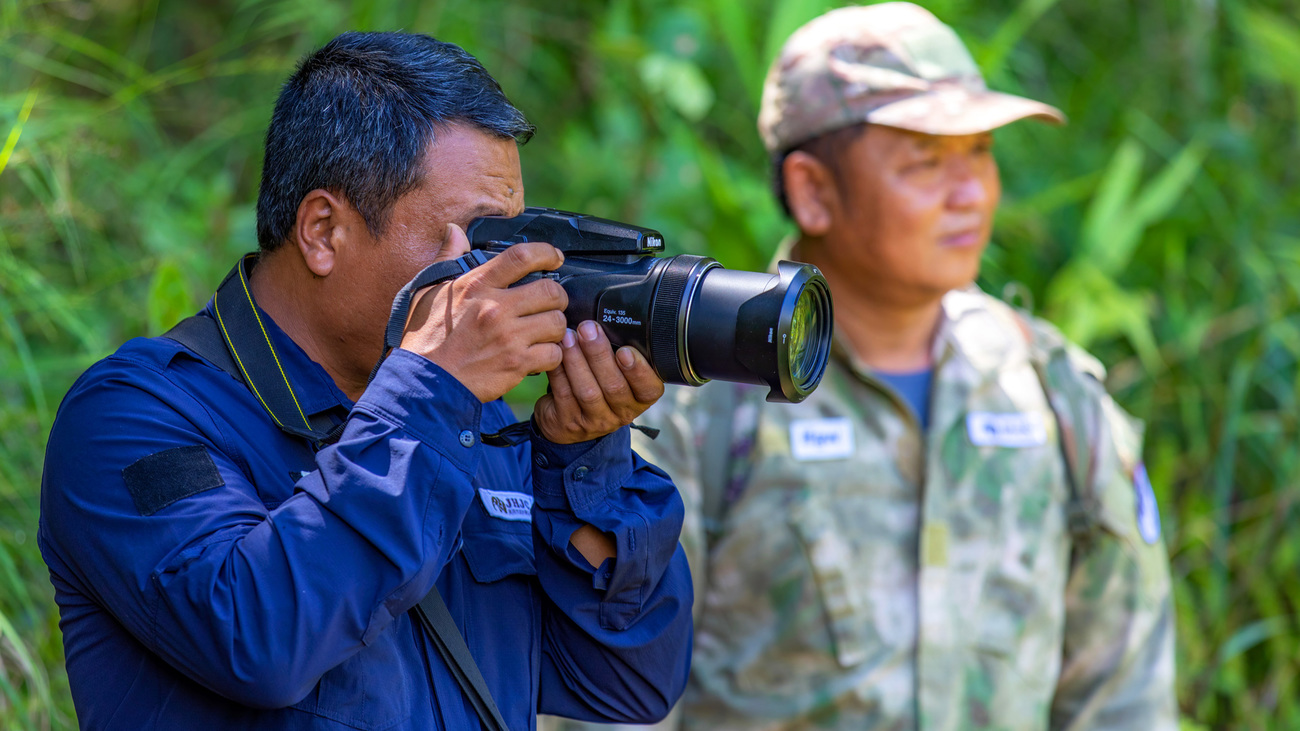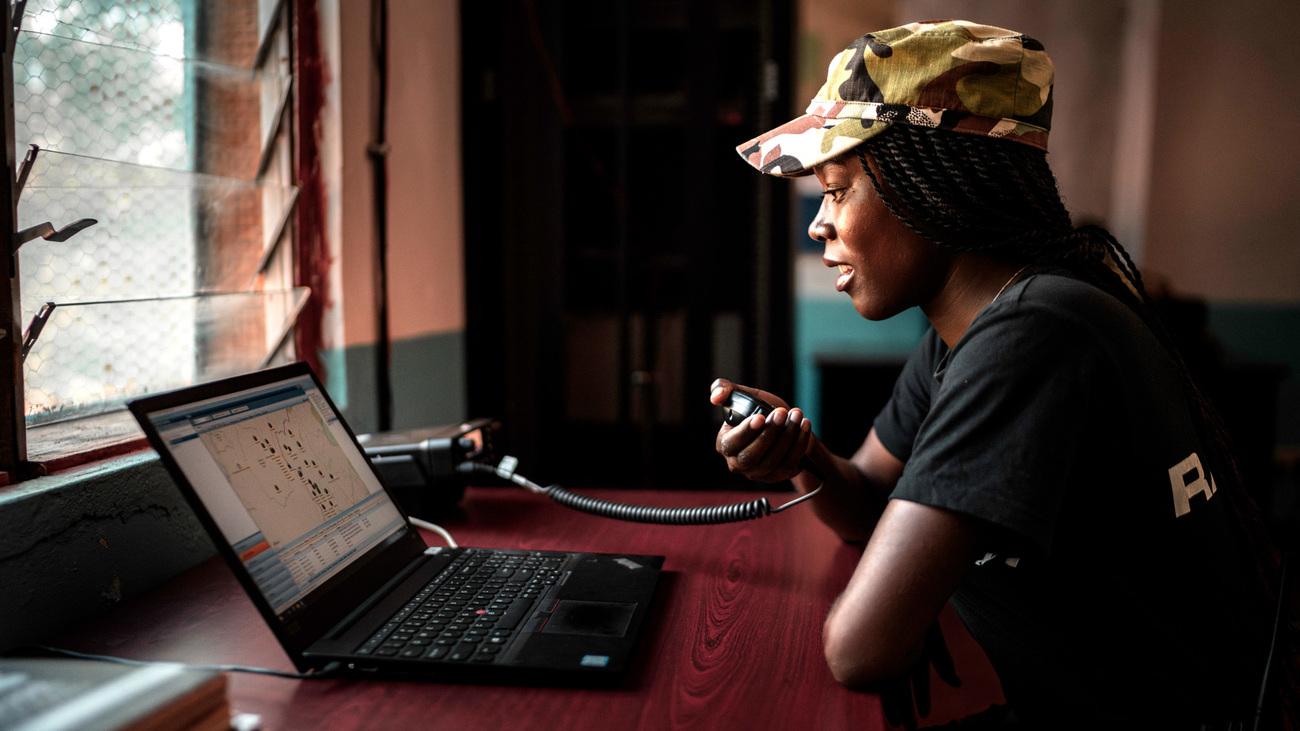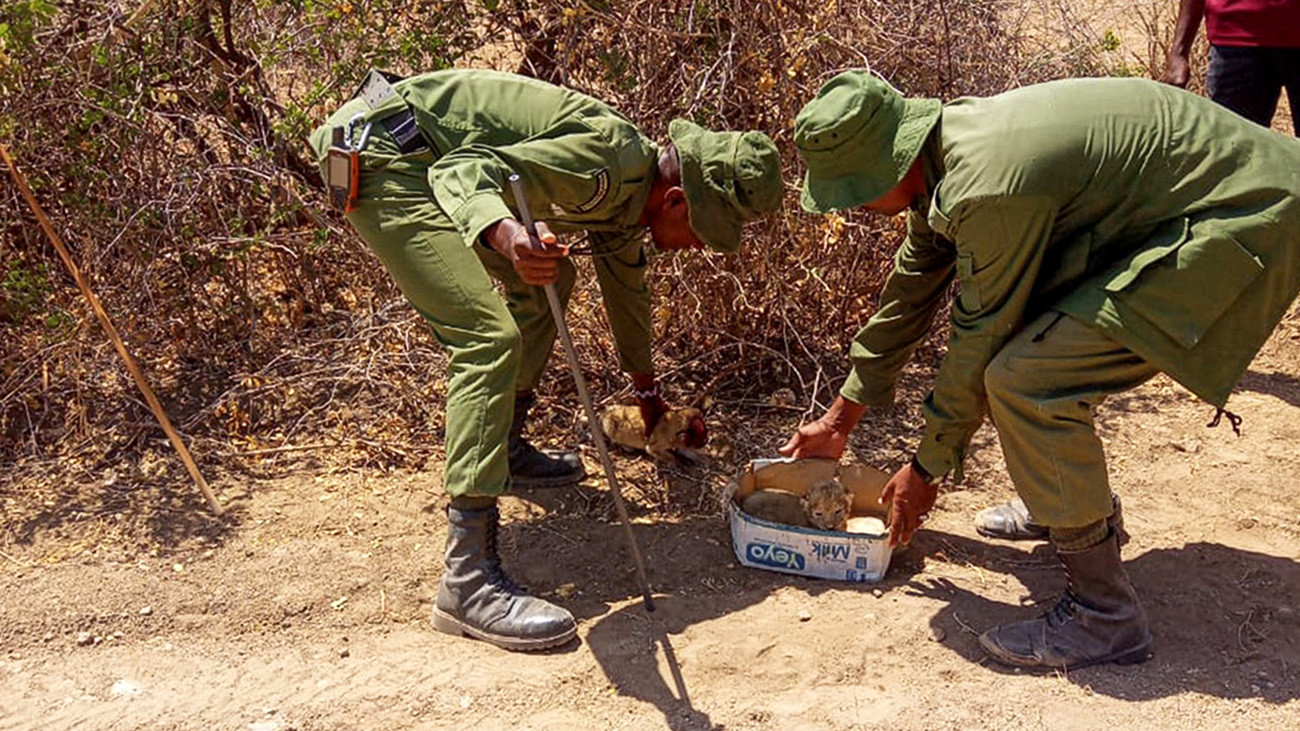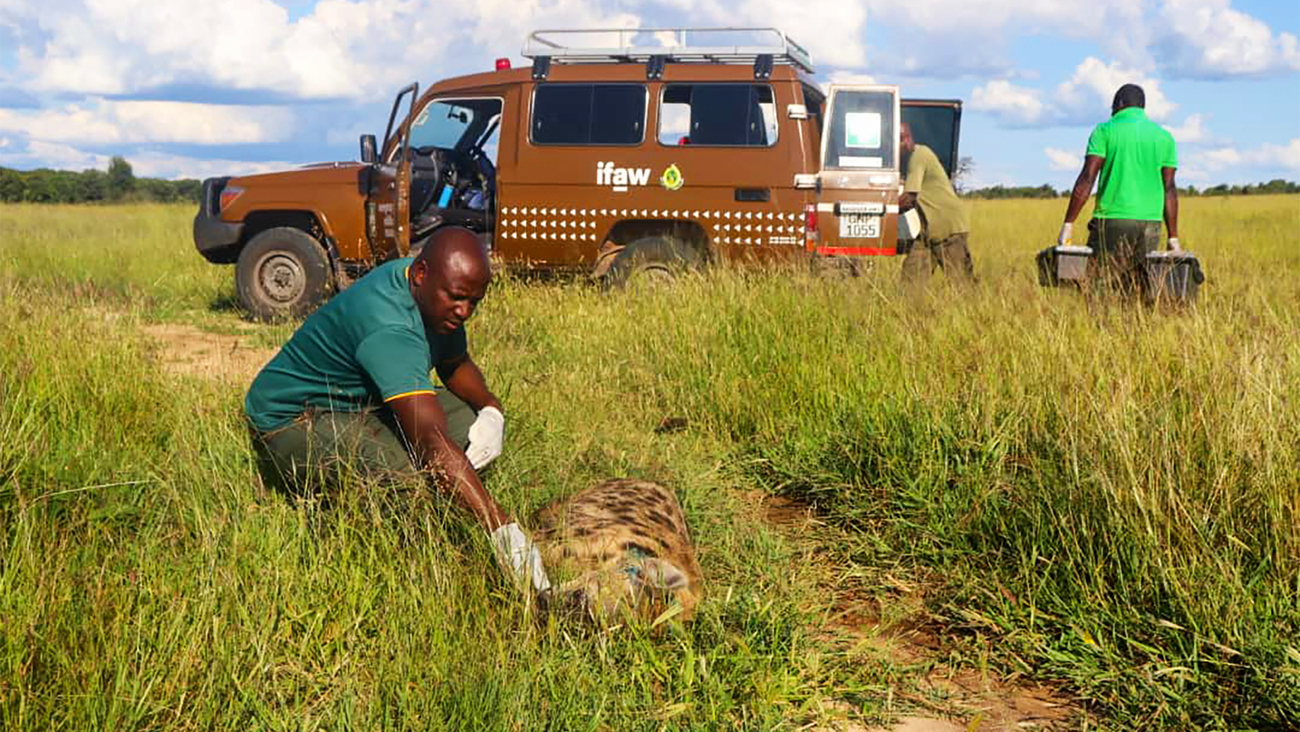What are wildlife rangers?
What are wildlife rangers?
Wildlife rangers, often just called rangers, work in national parks, cultural sites, and other protected areas of land to protect and monitor the populations of wild animals that live there. Their work is difficult and dangerous, and it’s crucial to preventing threats like poaching.
It’s estimated that there are about 1.5 million rangers employed in the world; however, the majority of them are likely underequipped for their roles. Rangers are typically employed by governments or local communities, funded by taxes and revenue from tourism. Conservation can’t exist without this important job, which is why IFAW is committed to supporting rangers and their welfare.

Read on to learn more about what their job entails, the dangers they face, and how IFAW works to help them.
What do wildlife rangers do?
During their long, grueling hours, wildlife rangers tackle a wide range of duties. Much of their work occurs on patrol around the area they protect. Starting in the early morning when animals are most active, these patrols may be about two to three hours, covering a smaller area, in places where there are more rangers and ranger stations—these short patrols might be done once or twice a day.
Some patrols last longer—a week or more—in areas that have fewer rangers and more space between ranger stations. This is often the case in larger parks. On these long-range patrols, rangers are out walking for the entire day and camp out at night. Rangers take turns at night staying awake to keep watch.
During patrols, rangers keep an eye out for criminal activity like poaching and illegal logging. They look for snares and traps set to catch animals and remove them—a time-consuming task. Part of the danger of their job lies in how they may come directly into contact with poaching groups and the risk of the conflict escalating.
In addition to fighting wildlife crime, rangers look for and record signs of wildlife like paw prints and fecal matter. They use cameras and GPS recording equipment to collect data on populations and their movements. A new technology utilised by many rangers is called the Spatial Monitoring and Reporting Tool (SMART). This tool contains software designed specifically for wildlife conservation, and it’s available on smartphones, which makes it easy for rangers to use while on patrol. This kind of technology is often only available to the most well-supported rangers, however. In many national parks and protected areas, rangers are not equipped with even basic kits due to a lack of funding.
Rangers also engage with local communities living in and around the protected areas. Not only is this important for preventing and responding to incidents of human-wildlife conflict, but it also provides them with another source of intelligence on wildlife crime, as community members may have directly witnessed criminal activity. Rangers are in direct communication with local communities and respond quickly to reports of wildlife crime and human-wildlife conflict.
Engaging communities in conservation also helps raise awareness about endangered species and the threats they face. It can help prevent poaching in the future by educating the youth about why it’s illegal and why protecting biodiversity is important.
In addition to all this work, rangers spend much of their time in dry seasons fighting fires. While some natural fires are important for the health of ecosystems, in the age of climate change, fires in some areas are increasingly severe and unpredictable. Some natural and manmade fires can be very harmful to the landscape and animals.
As wildlife tourism is a driving force in the economy of many places where rangers work, they also often assist with tourism.

What threats do wildlife rangers face in their work?
Rangers’ work is grueling and can be deadly. In an IUCN report, 88.6% of rangers in Africa stated they had faced a life-threatening situation at work. They often work in remote locations, separated from their homes and families for weeks to months at a time. Their salaries are typically low, and some are even volunteers. It’s estimated that every week, about two rangers die in the line of duty—that’s about 100 every year.
Rangers often lack the equipment they need, such as vehicles, and experience poor living conditions at ranger bases. Rangers need access to clean water, sufficient shelter, survival skills, first aid training, criminal investigation training, good health care—especially since their work is injury-prone—and financial security for their families, in the event that they are killed or incapacitated. Often, housing for a ranger is as basic as a tin hut. Even simple tools like mosquito nets can make a huge difference in the lives of rangers, as they can prevent serious diseases. Estimates suggest that 80% to 90% of rangers globally are underequipped in their work.
One of the most dangerous parts of a ranger’s job is the reality that they are up against well-organised criminal syndicates. Rangers may become outnumbered by poachers on the ground or lack self-defense methods. Over 66% of rangers in Africa reported that they had been attacked by poachers.
Working in close contact with animals also makes their work perilous. Sometimes, large animals like rhinos and hippos lash out at humans when they feel threatened or have been traumatised by previous encounters with humans. In Africa, 82% of rangers said they had experienced a dangerous encounter with wildlife. Rangers are also at risk of being exposed to zoonotic diseases—illnesses that can be passed between animals and people.
In addition to dealing with wild animals, rangers also face harsh, unforgiving landscapes, dangerous equipment like barbed snares, extreme temperatures, severe weather, limited communication, and all the other risks associated with working—and sometimes sleeping—in the wilderness.
Patrols also can take a toll on rangers’ physical health, as they are often on their feet, walking long distances for many hours or days. Mental health and morale can also become an issue. Sometimes, rangers receive harsh treatment from their surrounding communities due to misconceptions about their work. Also, coming face-to-face with criminal activity done against animals and witnessing the horrors of poaching can take its toll.

How does IFAW support rangers?
As the guardians of wildlife and the landscapes they inhabit, rangers are our best resource in fighting wildlife crime and protecting some of the world’s most iconic and endangered species, such as elephants, rhinos, cheetahs, and giraffes.
By 2030, members of the United Nations Conference of the Parties aim to protect 30% of the Earth’s surface. Protecting 30% of the world is a big ask of rangers, who—as we have discussed—are often underpaid, underequipped, and underappreciated.
That’s why at IFAW, we have dedicated much of our time and resources to supporting wildlife rangers.
Over the past five years, IFAW has supported the rangers of Lukusuzi National Park, Zambia, helping supply uniforms, patrol vehicles, equipment, training, food rations, and allowances, all of which have greatly improved ranger morale. We also supported the construction of a new ranger base with much better living conditions than the rangers previously experienced.

In 2023, along with USAID, we supplied community rangers in Mgeno Wildlife Conservancy, Kenya, with motorcycles. These vehicles speed up their response time to incidents of wildlife crime and human-wildlife conflict and empower the rangers to better support their communities.
In 2022, IFAW facilitated a two-day intensive training program in Amboseli, Kenya, that helped 30 of the Olgulului Community Wildlife Rangers develop new skills as first responders in wildlife crime scene investigations. They were trained to use equipment like digital cameras and smartphones to capture photographs and document scenes.
It’s estimated that less than 11% of wildlife rangers are women. IFAW is excited about getting more women involved in conservation through our Team Lioness project, which empowers women from Kenya’s Maasai community to serve their communities as rangers. We also renovated their ranger base in Risa at Amboseli National Park to support the needs of their families and children. IFAW-supported women rangers also work alongside male rangers in Kasungu National Park, Malawi.
Related content
Every problem has a solution, every solution needs support.
The problems we face are urgent, complicated, and resistant to change. Real solutions demand creativity, hard work, and involvement from people like you.